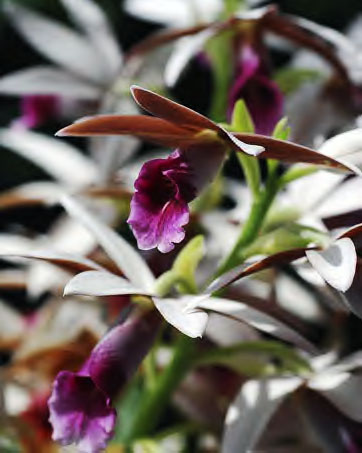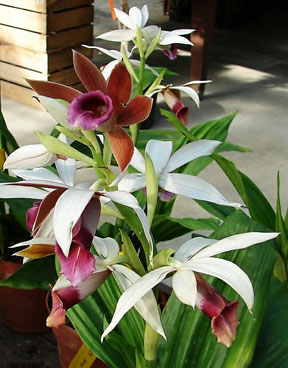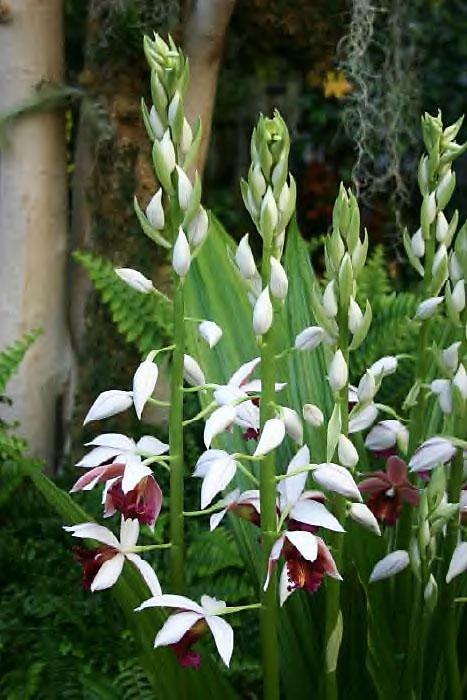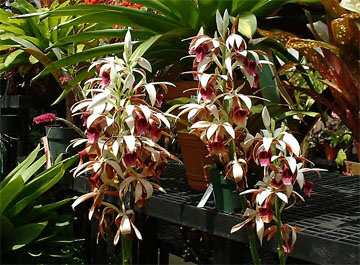

Annual Auction Scheduled for Saturday, March 1, 2008 at Holiday Inn Express.
2 PM
Dr. John Atwood, Director,Orchid Identification Center
Marie Selby Botanical Gardens
February and March herald the spring season with masses of the Nun's Orchid. These plants have large plicate leaves that lend a tropical appearance to any setting. They are topped by successively flowered inflorescences held on rigidly upright stalks with flowers that are usually somewhat nodding and variable in color as well as size. The lips are usually maroon turning reddish with age, although albinic forms exist that are nearly yellow. The smaller growing plants usually have darker flowers with yellowish green backs to the sepals and petals while some of the larger growing plants have white backs.




At Marie Selby Botanical Gardens, Sarasota, Florida, these plants are grown
in pots so that they can be moved wherever displays are needed although
they are easily accommodated as terrestrials. I grow mine in a mixture
of cypress mulch, top soil, and garden compost of decomposed pine needles,
an acid mix to which they adapt well. After flowering, plants may lie dormant
until late May. During their growing season the rapidly growing plants
can hardly be overwatered, and respond well to somewhat stronger fertilizer
solutions than most epiphytic orchids.
The Nun's Orchid (Phaius tankervilleae) is especially useful as a landscape plant. They can be grown in the ground with attention paid to watering during times of drought. I prefer to grow my plants in pots so that they can be moved where needed and for elevation to nearly eye level. Clones with the white backs show up better in shaded areas, and are especially effective when illuminated by a shaft of sunlight. I move one large plant to an elevated position by the front door to impart cordiality to the street entrance. Flowers last over a month in perfection and require little attention except occasional watering and removing of spent flowers.
